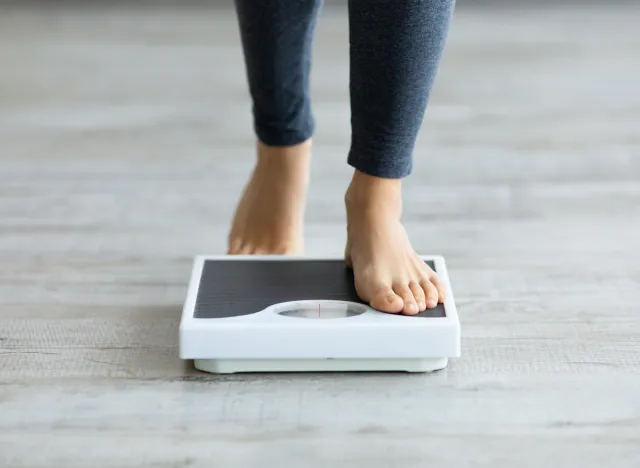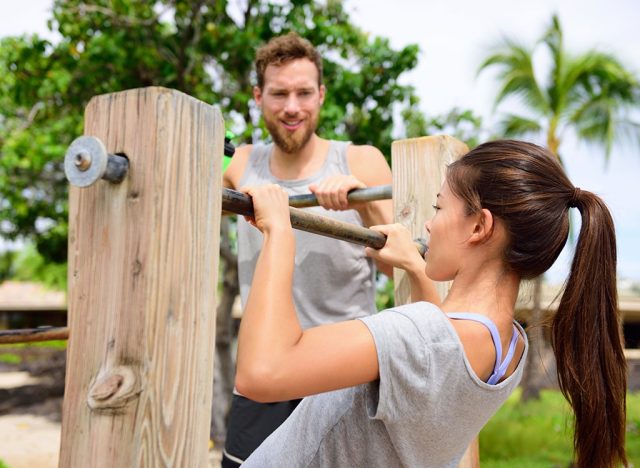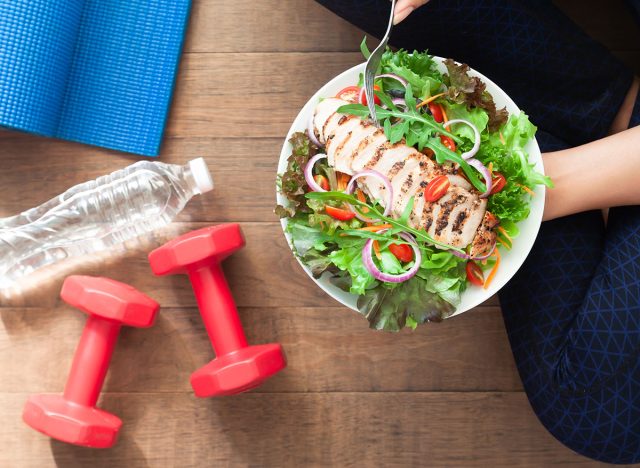Secret Tricks for Getting a Lean Body After 30, Science Says

If you've seen your 30th birthday come and go and can't help but feel past your prime, snap out of it! Good times aren't had by only young adults and adolescents. Despite what you may have believed at 16, middle age can actually be pretty fun. One recent survey even reports the average American would prefer staying around age 36 indefinitely!
Speaking of life after 30, tons of people mistakenly believe it's impossible to change their bodies for the better in middle age. That couldn't be further from the truth. Consider this study, published in Clinical Endocrinology: Researchers found that older adults over the age of 60 can lose weight just as efficiently as younger individuals. If a 60-year-old can lean out, you certainly have no excuses at 30!
While the most obvious reasons to pursue a leaner and more toned physique are to improve your health, activity levels, and appearance, there are plenty more where those come from that will inspire you to make a fitness change. For example, this study published in Neurobiology of Aging notes that the brains of overweight, middle-aged individuals are "ten years older" than the minds of their leaner counterparts of the exact same age.
Interested in losing weight and leaning out but don't know where to begin? Read on to learn some secret tricks for sculpting a lean body after 30, according to science. And for more, don't miss these Exercise Mistakes That Can Shorten Your Lifespan.
Start with a scale

This tip is deceptively simple, but sometimes, the oddest of strategies have a way of offering the biggest advantages. Multiple research projects report simply owning and stepping on a scale each day is enough to promote weight loss. Taking note of your weight forces you to be aware of your body's weight fluctuations, making it just a little easier to make healthier choices.
This study presented by the American Heart Association also adds that stepping on a scale each day is advantageous because it will help you keep closer track of what's working in regards to weight loss and what isn't in real-time. Further research released in the Journal of Behavioral Medicine even found that stepping on a scale each day led to weight loss among a group of women who weren't even actively attempting to lean out.
"The losses in BMI and body fat percentage were modest, but still significant, especially keeping in mind that these women were not part of a weight loss program," says lead researcher Diane Rosenbaum, PhD. "We did not expect that, in the absence of a weight loss intervention, folks would be losing weight."
Related: Sign up for our newsletter for the latest health and fitness news!
'Gamify' your lean body goals

If you haven't already, put to bed the antiquated notion that exercise has to be a hassle. Treadmills and barbells may seem like a whole lot of work on our lazier days, but there are numerous ways to find some fun in fitness—making it much easier (and enjoyable) to lean out along the way.
One such strategy is to "gamify" your workouts, or incorporate competitive elements. You can compete against yourself or a workout partner. Imagine your workout as a game to be beaten. Add in levels, bonuses, high scores, or even a full-blown point system. Before you know it, you'll be sweating for longer and putting in greater effort without even realizing it.
This study released in JAMA Internal Medicine reports families instructed to gamify their workouts ended up exercising 27% more than other families simply told to exercise normally. Moreover, those assigned to the gamify condition upped their daily step count by an astounding 1,700 steps!
"By engaging families in an interactive game-based intervention using activity trackers, we found significant increases in physical activity. This approach is exciting because it has the potential to be scaled more broadly," notes study senior author Dr. Joanne Murabito.
Related: The Worst Lifestyle Habits Causing You to Feel Older, Science Says
Incorporate progressive resistance training

Don't make the common fitness mistake of neglecting weightlifting and resistance exercises in favor of all cardio all the time. Aerobics and activities like running, walking, and cycling are no doubt a big part of upping your fitness game, but you're also going to want some muscles to show off once those extra lbs are gone!
Toning up is a major aspect of leaning out. Unfortunately, the older we get, the more lean muscle we naturally part ways with. It's estimated that the average middle-aged adult male loses anywhere between 3-5% of their muscle mass per decade. Luckily, research published in the American Journal of Medicine reports that a regular resistance training regimen with an emphasis on progression, or slowly but steadily upping workout intensity and weight totals, can sustain muscles and build strength at virtually any age.
Researchers report a progressive resistance training program lasting 18-20 weeks can help middle-aged and older adults add an average of 2.42 pounds of lean muscle and increase their strength by a remarkable 25-30%! Study authors suggest getting started with some simple bodyweight resistance exercises like push-ups, pull-ups, or squats.
"You should also keep in mind the need for increased resistance and intensity of your training to continue building muscle mass and strength," says Mark Peterson, Ph.D., a research fellow in the U-M Physical Activity and Exercise Intervention Research Laboratory, at the Department of Physical Medicine and Rehabilitation. "We firmly believe based on this research that progressive resistance training should be encouraged among healthy older adults to help minimize the loss of muscle mass and strength as they age."
Related: How to Master the Perfect Pushup, Trainer Says
Stay slow and steady

It would certainly be nice to lose weight, tone up, and create your ideal body overnight, but that's just not a realistic expectation. Instead of lamenting this fact, instead, choose to embrace the process. As the old saying goes, slow and steady wins the race. Research released in the scientific journal Obesity reports it's easier to accomplish sustained, long-term weight loss while focusing on small, incremental, and manageable weight reductions.
Instead of trying to lose 10 pounds in two weeks, focus on shedding just a single pound each week. Such an approach will make it easier, and less stressful, to stick with your routine. "Settle on a weight loss plan that you can maintain week in and week out, even if that means consistently losing ¾ of a pound each week," adds co-researcher Dr. Michael Lowe.
"It seems that developing stable, repeatable behaviors related to food intake and weight loss early on in a weight control program is really important for maintaining changes over the long-term," explains lead author Dr. Emily Feig.
Related: This Workout Plan Will Keep You Lean Throughout the Holidays
Bonus: Don't neglect your diet

While working out for a leaner, more toned physique, it's essential to harmonize your daily eating habits as well. You don't want to counteract countless hours spent exercising by eating an unhealthy diet. The right nutritional approach can make or break any lean body journey.
"Strength training will help sculpt those muscles for that leaner look, but if someone doesn't change how they eat are still going to have layers of fat on top of the muscles," comments Sarah Pelc Graca, NASM-CPT and founder of Strong with Sarah. "I would recommend that people start small when focusing on nutrition changes by either setting a moderate calorie deficit, if calorie counting feels good to them, or if not, incorporating small healthy changes into their diet."
"For example, you could start by making it a goal to consume protein at most meals, add in one or two servings of vegetables a day, or try to drink certain ounces of water."
For more, check out Doing This One Thing While Strength Training Burns Twice as Many Calories, New Study Says.








